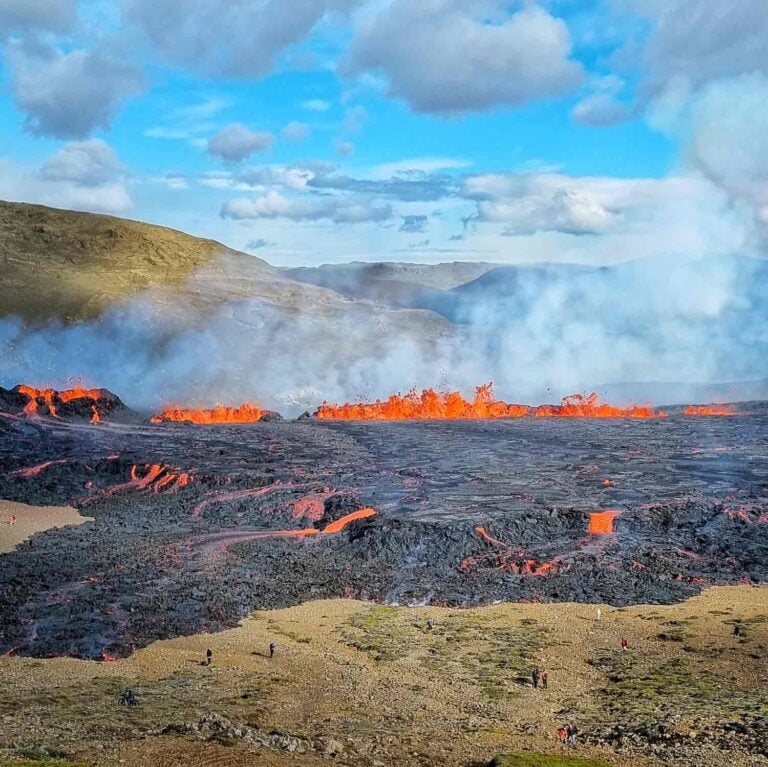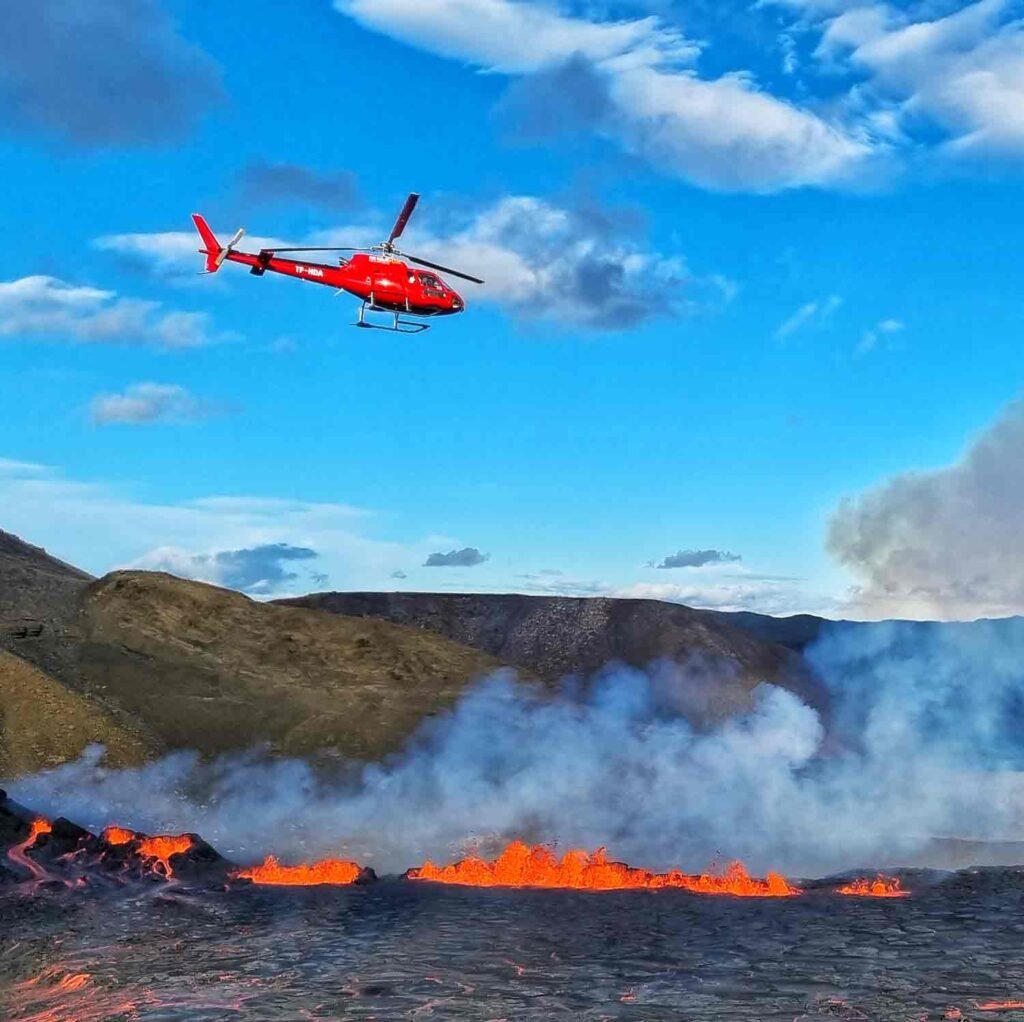The inhabitants of Iceland, as well as foreign tourists, have not been oblivious to the volcanic eruptions on the Reykjanes Peninsula over the past three years. Among those who had previously warned about the danger of an eruption near populated areas, long before the fires began in March 2021, is Dofri Hermannsson. At that time, he was a deputy city councilor for the City of Reykjavík – today, he takes tourists on tours of the new lava fields.
“I started doing this because I was assisting my brother, who was organizing cave tours to Leiðarendi near Bláfjöll. Occasionally, there were people on these tours who balked at the thought of entering the cave. So, he asked me to take those people somewhere else. Since I was well-acquainted with the mountains in that area, the Krýsuvík region, and other places near Reykjavík, I began showing people around and telling them about the potential volcanic eruption.”
Visions of Lava Flowing Towards Reykjavík
When asked how he became familiar with the area in question, Dofri explains that during his stint in politics from 2006 to 2010, as a deputy city councillor for the Social Democratic Alliance in the Reykjavík City Council, a clairvoyant he knew approached him. This individual was deeply concerned that lava might flow down Elliðaárdalur Valley (in eastern Reykjavík) having repeatedly had visions predicting such an event. These warnings gave Dofri much to ponder, as this person often had insights into future events, something that was difficult to explain.
“I hadn’t given much thought to geology at that time, I was surprised by this talk, and wasn’t sure if such a thing was even possible,” says Dofri. But his interest was piqued. “I went and spoke with some of our most respected geologists at the time and asked them outright, can lava flow down Elliðaárdalur Valley? They all answered that at some point, such an event would occur; it was just a matter of time. The last time this had happened was about 4,600 years ago. I then asked them if they knew of any emergency plans in place to respond to such a scenario. They said they didn’t think so. There had generally been very little interest in seriously examining this volcanic threat to the capital area. They added that this was, of course, neither the most serious nor the most likely scenario; that would be in nearby town of Hafnarfjordur. One of them said he was puzzled about how the Vellir neighbourhood got through planning, built in the lowest area in the most probable path for the next lava flow, where lava can be expected at least once every thousand years, and now it’s been almost 900 years since the last lava flow.”
Like a tipsy uncle at a confirmation party
As stated before, at that time Dofri was involved in politics––far from being involved in any kind of travel or tourism service––and he tried twice to make his point from the podium in the city council. According to him, it was a very strange experience. ‘People probably thought I was there to draw attention to myself for an election that would take place two years later. The experience of standing in the podium and talking about how Reykjavik should have contingency plans in case of a volcanic eruption, and feeling like people were looking at me as if I were a tipsy uncle at a confirmation party, that was odd. But of course, it deepened my understanding of how politics work.’
At the same time, Dofri’s interest in the geology of the area around the capital grew. He freely admits to getting engulfed in his interests, almost to the point of obsession. When earthquake tremors occurred, he often contacted Sigmundur Einarsson, a geologist, to ask if he thought there might be an eruption coming up. Alongside this, Dofri explored the region and read extensively. Before he knew it, he had accumulated a wealth of knowledge about accessible places and a plethora of entertaining stories. It made perfect sense that he should engage with tourists who hesitated to go on a cave tour and instead chose to explore the ground above.
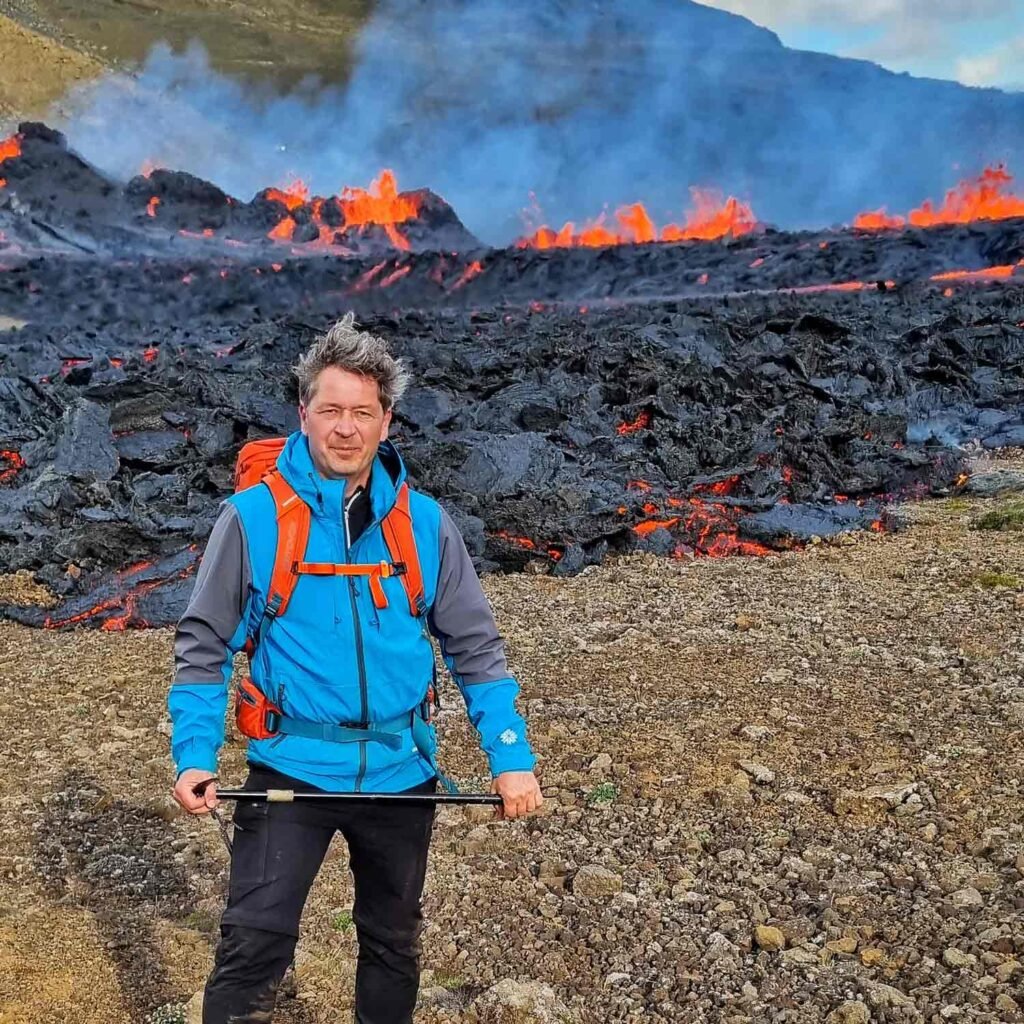
Speculation Trips Around Active Volcanos
Dofri founded his tour guide company, Reykjavik Erupts, in 2017. “From this, the material for volcanic speculation tours emerged. I’ve put together these tours for travellers around Reykjanes, showing them where eruptions have occurred, where recent activity took place, and where eruptions might happen in the no-too-distant future,” explains Dofri. “Travellers find it incredibly interesting to see 3,000-year-old lava, 1,000-year-old lava, and even lava that’s only 2 to 3 years old. When I add to that the insights from local geologists who suggest that an eruption could occur next week, it brings the whole narrative to life. It’s better if we can explain geology in a simple way for amateurs, even children, so the subject comes alive.”
Enthusiasm for his tour guiding services is ample beyond Iceland’s borders, and when asked whether his company has faced challenges similar to those warned about by travel industry representatives in Iceland this year, Dofri remains optimistic. He believes this year isn’t worse than previous years, partly due to careful planning and meticulous execution. Reykjavik Erupts received the Travel & Hospitality Award earlier this year for “Unwavering commitment to excellence and exceptional service.” Recently, the company also received recognition from TripAdvisor, placing it among the top 10% of businesses worldwide. “Our strategy has never been to expand significantly; instead, our focus is on enjoying what we do and make an effort to do our job well,” says Dofri. He shares a motto he encourages everyone working for him to keep in mind: “Treat everyone as if they were your family from your time as an exchange student, finally coming to meet you and see your country.”
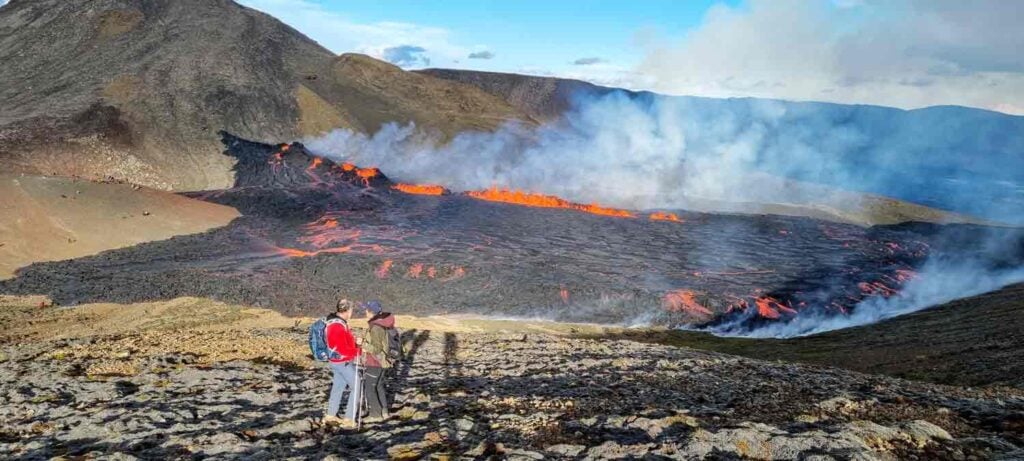
It’s safe to say that Dofri has found fulfilment in transitioning from speaking in front of disinterested city council members to engaging with curious travellers. In addition to these volcanic speculation tours, his company offers excursions to Hekla, Katla, and Snæfellsjökull – all volcanoes that have erupted, could erupt, and will surey erupt again.
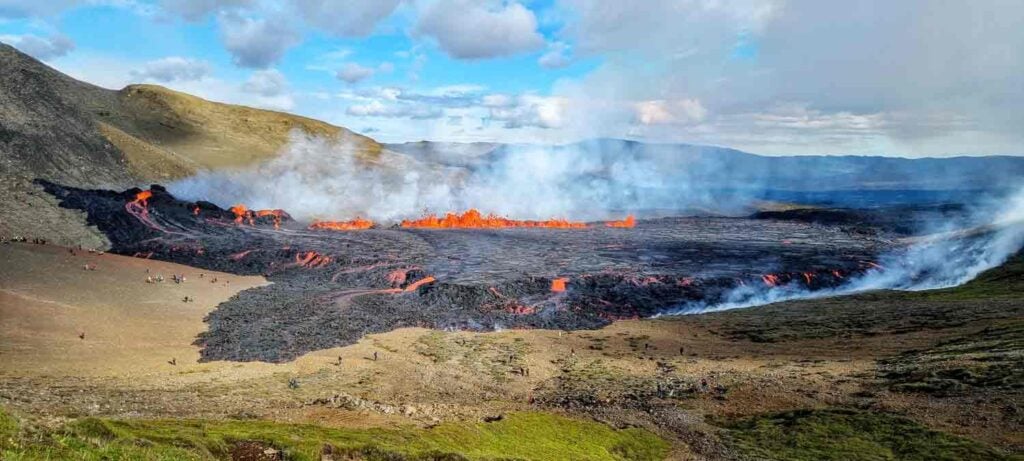
Who knows? It might happen tomorrow, as the geologists say.
Texti: Jón Agnar Ólason

